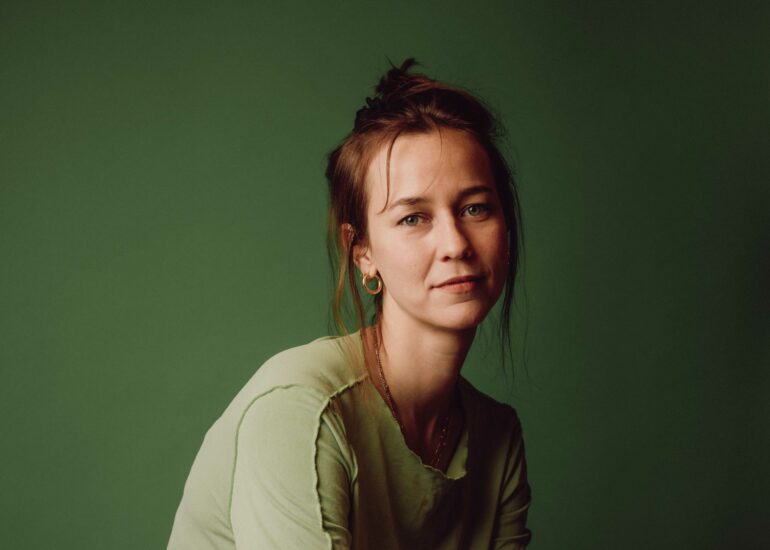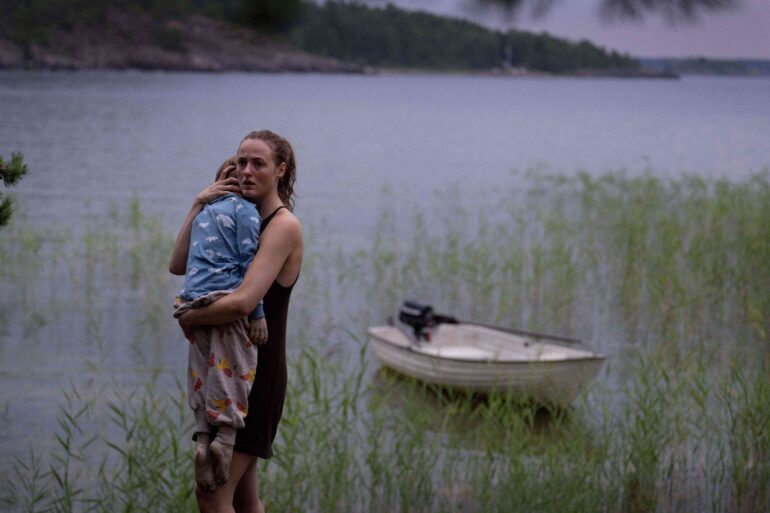WRITTEN BY: Aleksander Huser
Zombie film on John Ajvide Lindqvist novel to open Gothenburg Film Festival.
Norwegian director Thea Hvistendahl‘s Handling the Undead (Håndtering av udøde) had its world premiere a few days ago in the World Cinema Dramatic Competition at the prestigious Sundance Film Festival. It’s set to open Gothenburg Film Festival January 26th, where it will also compete in the festival’s Nordic Competition.
The film is based on the novel by Swedish writer John Ajvide Lindqvist, whose stories have previously been adapted for Tomas Alfredson’s 2008 film Let the Right One In (Låt den rätte komma in) (as well as two later adaptations of the same novel) and Ali Abbasi’s Border (Gräns) from 2018.
Handling the Undead is set in an abnormally hot Oslo summer, where sudden strange events result in the awakening of the recently deceased. Through three parallel stories, the film explores what happens when the undead are reunited with their loved ones.
The film’s screenplay is penned by Ajvide Lindqvist and Hvistendahl. The ensemble cast includes The Worst Person in the World’s (Verdens verste menneske) Renate Reinsve and Anders Danielsen Lie, as well as seasoned Norwegian actors Bjørn Sundquist and Bente Børsum, and Iranian/Swedish actress Bahar Pars.
“I am very fond of John Ajvide Lindqvist’s books, and fascinated by the way he introduces supernatural elements in realistic settings as a form of magic realism,” the director says.
Hvistendahl has previously directed several award-winning shorts and music videos, and marked her feature debut in 2017 with the hybrid music film The Monkey and the Mouth (Adjø Montebello). Handling the Undead is the director’s first fiction feature.
Handling the Undead is produced by Kristin Emblem and Guri Neby for the Norwegian production company Einar Film, in co-production with Zentropa Sweden, Nordisk Film Denmark and Filmiki Productions in Greece. The film has received support from Nordisk Film & TV Fond.
What was it about this novel that made you want to make it into a film?
I liked the premise very much. I’m not particularly fond of zombie films, but this felt like something different, where the undead are used as an image of sorrow. It’s very down to earth, portraying characters with whom you gain a lot of empathy and understanding, at the same time as they are in a very special situation. And I liked the atmosphere, which combines the unsettling with this strong sense of mourning.
As you say, the film has a different approach to zombies – if they should even be called zombies?
The film is more about the question of what these awoken dead people are. They are clearly not “normal” zombies that come at you after a virus pandemic or something like that. In a way they’re people who have got some life back – and yet are dead. What is an undead person, and will these persons ever be able to become the persons they once were? I feel there is a difference, in that zombie films often address xenophobia, with the zombies clearly being our enemies – whereas the dilemma here is that the undead are also the people most loved by those still alive.
The film also has a more realistic approach to the concept of the undead?
Yes, and that’s also a fascinating part of the book. I think John wanted to explore what it would be like if a dead body regained some life. Their most natural impulse might not be to want to eat a lot of other people, but perhaps to rather seek out their loved ones. Or maybe they are afraid, or don’t want to do anything. I have thought of this as a realistic approach to dead people coming alive – which isn’t very realistic in itself, of course.
The screenplay was written by John Ajvide Lindqvist and yourself. What was it like to collaborate with the book’s author on the adaptation, also when it came to distancing yourselves from the novel version?
John first adapted the book himself, so he had made some choices already. I then wrote some drafts after I had entered the project, in which I could rewrite as I wished, with him approving. He gave me a lot of freedom. It was important to make the material mine, and to understand everything in there. The novel also says a lot about how society handles the undead, but I tried to peel away all other parts than the three stories we follow in the film, all of which share the same theme.
How would you define the film in terms of genre?
I have thought of it as a drama with a horror premise. I’ve also thought it could be called melancholic horror, but then again, in a way it’s more drama than horror – even though it has this unpleasant, eerie feeling running through it. And that was also the intention, to create a combination of something both disturbing and emotional. So I suppose it’s a form of drama/horror.
It’s also a film with little use of dialogue. Could you tell us about this decision, and what impact the absence of dialogue had on the process of working with the actors?
In general, I prefer using images and sound in storytelling instead of dialogue. In a way, the theme and the events are so dramatic that it felt like you would lose some of the suspense and impact if the characters were to talk about it as well. But it was mostly about removing all unnecessary elements, and it turned out that much of the dialogue was superfluous. It also leaves more room for the audience to project themselves into the film, which I think is important.
Working with the actors was a nice process, in which we also removed quite a lot of dialogue on set. Sometimes we first shot scenes with dialogue and then tried without, and preferred the latter. The actors are also very good, so they can act things out without having to express it in words.
It has already received attention that the film reunites Renate Reinsve and Anders Danielsen Lie after they both starred in The Worst Person in the World. Tell us about the choice of cast, and those two in particular?
We began this project in 2019, and I cast Bente Børsum, Bjørn Sundquist, Bahar Pars and Anders back then. Following that, we had rounds of casting for the Anna character, and Renate was perfect for the part. So I also cast her before we knew that The Worst Person in the World would be in Cannes, with all that followed. I was conflicted about it, because I felt that she and Anders both having appeared in Joachim Trier’s film could be a disadvantage. However, I decided that it wouldn’t be quite the same, since they appear in separate stories and are not acting directly opposite each other. As it turned out, their reunion drew a lot of attention to the film, but this was never a motivation on my part. They were simply the best choices for their roles.
What guidelines did you have for the film’s visual style? It’s shot on analogue film?
Yes, it’s shot on 35mm film. I wanted to use analogue film to add an element that felt more alive to a film that deals so much with death and decay. I also prefer the way working with analogue formats makes everyone more focused during the shoot – and it looks better. We had a detailed visual style guide for the film, in which much of the essence was to create an unsettling feeling, since the film, to a huge extent, is about death and the unknown. For instance, things can happen outside the frame, and even if the film has a lot of daylight shots, they should also have a certain darkness.
Also, and this is related to removing a lot of dialogue, I wanted the film to be watched, understood and felt through the images, almost like a silent film. And that we should observe the characters, somehow, rather than force ourselves to get too close to them.
Official trailer:

